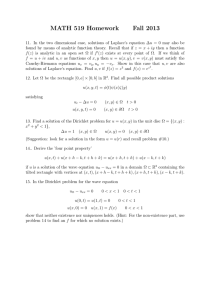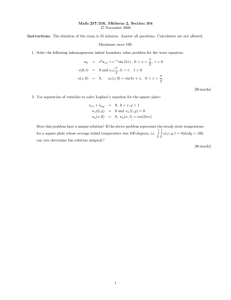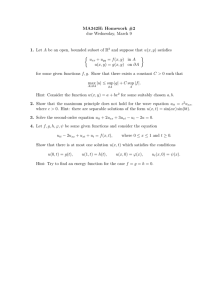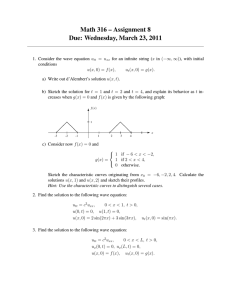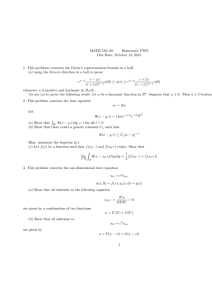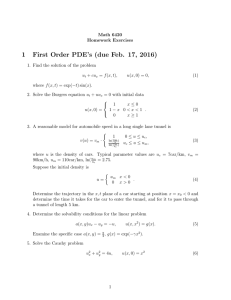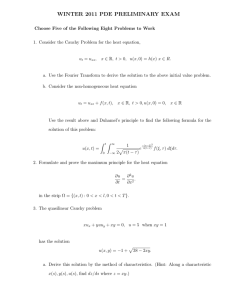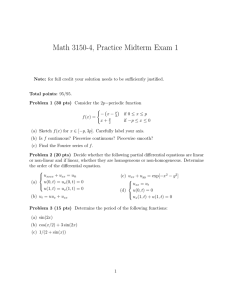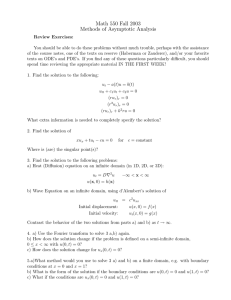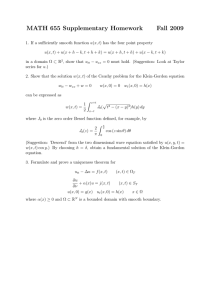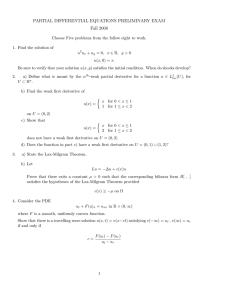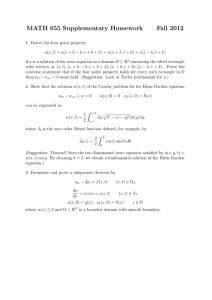Differential Equations Qualifying Exam University of British Columbia August 30 2013
advertisement
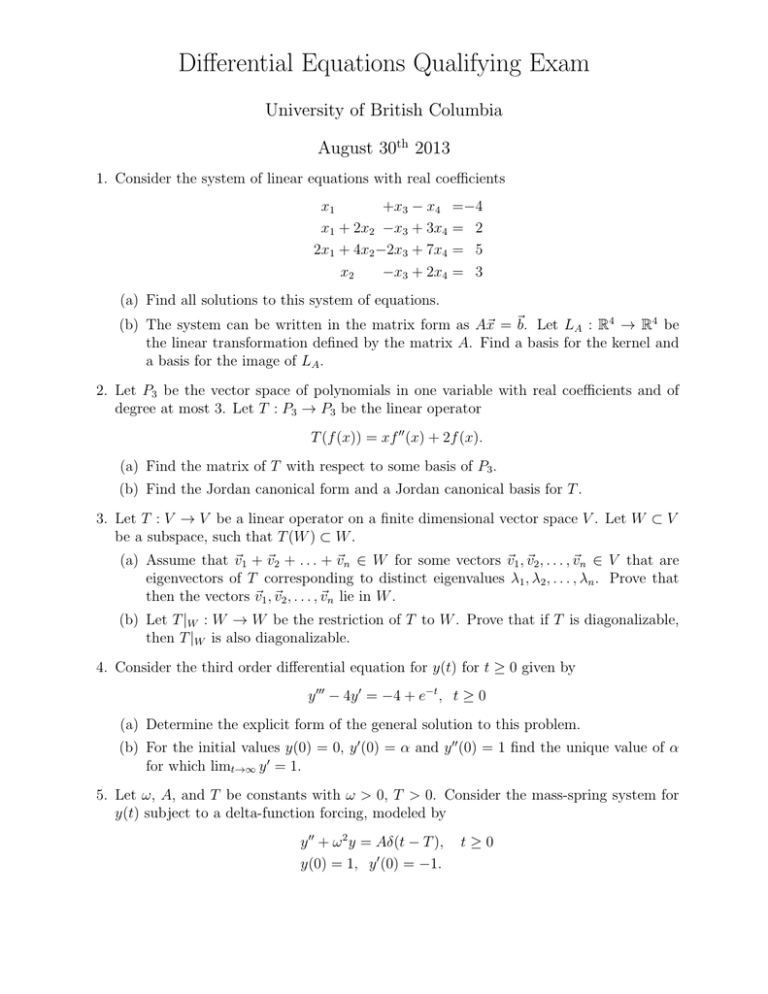
Differential Equations Qualifying Exam
University of British Columbia
August 30th 2013
1. Consider the system of linear equations with real coefficients
x1
+x3 − x4
x1 + 2x2 −x3 + 3x4
2x1 + 4x2 −2x3 + 7x4
x2
−x3 + 2x4
=−4
= 2
= 5
= 3
(a) Find all solutions to this system of equations.
(b) The system can be written in the matrix form as A~x = ~b. Let LA : R4 → R4 be
the linear transformation defined by the matrix A. Find a basis for the kernel and
a basis for the image of LA .
2. Let P3 be the vector space of polynomials in one variable with real coefficients and of
degree at most 3. Let T : P3 → P3 be the linear operator
T (f (x)) = xf 00 (x) + 2f (x).
(a) Find the matrix of T with respect to some basis of P3 .
(b) Find the Jordan canonical form and a Jordan canonical basis for T .
3. Let T : V → V be a linear operator on a finite dimensional vector space V . Let W ⊂ V
be a subspace, such that T (W ) ⊂ W .
(a) Assume that ~v1 + ~v2 + . . . + ~vn ∈ W for some vectors ~v1 , ~v2 , . . . , ~vn ∈ V that are
eigenvectors of T corresponding to distinct eigenvalues λ1 , λ2 , . . . , λn . Prove that
then the vectors ~v1 , ~v2 , . . . , ~vn lie in W .
(b) Let T |W : W → W be the restriction of T to W . Prove that if T is diagonalizable,
then T |W is also diagonalizable.
4. Consider the third order differential equation for y(t) for t ≥ 0 given by
y 000 − 4y 0 = −4 + e−t , t ≥ 0
(a) Determine the explicit form of the general solution to this problem.
(b) For the initial values y(0) = 0, y 0 (0) = α and y 00 (0) = 1 find the unique value of α
for which limt→∞ y 0 = 1.
5. Let ω, A, and T be constants with ω > 0, T > 0. Consider the mass-spring system for
y(t) subject to a delta-function forcing, modeled by
y 00 + ω 2 y = Aδ(t − T ),
y(0) = 1, y 0 (0) = −1.
t≥0
(a) Calculate the solution using Laplace transforms.
Some potentially useful Laplace transforms:
L{f (t)}
1
, s>0
s
1
, s>0
s2
1
, s>a
s−a
a
, s>0
2
s + a2
s
, s>0
s 2 + a2
a
, s > |a|
2
s − a2
s
, s > |a|
2
s − a2
b
, s>a
(s − a)2 + b2
s−a
, s>a
(s − a)2 + b2
f (t)
1
t
eat
sin(at)
cos(at)
sinh(at)
cosh(at)
eat sin(bt)
eat cos(bt)
(b) Now set ω = 1. From your solution in (a) show that one can choose A and T so
that y = 0 for all t > T . (This shows that an appropriate delta function forcing at
time t = T can extinguish the oscillation that exists for 0 ≤ t < T ).
6. This problem concerns the wave equation utt − uxx + m2 u = f (x, t) on the whole line
where m is a nonnegative constant.
(a) Assume that f = 0 and that u is a solution which is C 2 and that u(x, t) is zero
forR x outside a sufficiently large interval for each t. Show that the energy E(t) =
1 ∞
(u2 + u2x + m2 u2 ) dx is conserved (i.e. independent of t).
2 −∞ t
(b) For this part we assume that m = 0 and f = 0. Determine explicitly the solution
Q(x, t) of utt − uxx = 0 with initial conditions u(x, 0) = 0, ut (x, 0) = ψ(x) where
ψ(x) = 0 for x ≤ 0 and ψ(x) = 1 for x > 0.
(c) Let Q(x, t) be as in part (b). Calculate S(x, t) = Qx (x, t) for t > 0 wherever the
derivative exists, and show that the solution of the inhomogeneous wave equation
utt − uxx = f (x, t) with initial conditions u(x, 0) = ut (x, 0) = 0 may be written
Z t Z ∞
u(x, t) =
(
S(x − y, t − s)f (y, s) dy) ds.
0
−∞
Page 2
